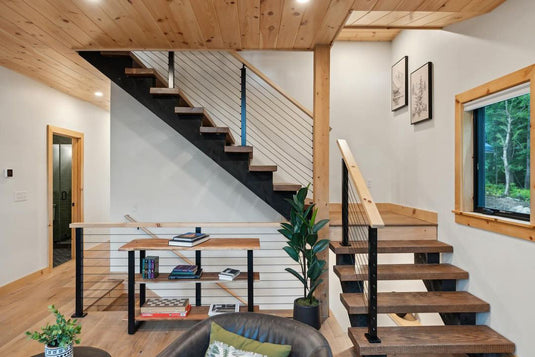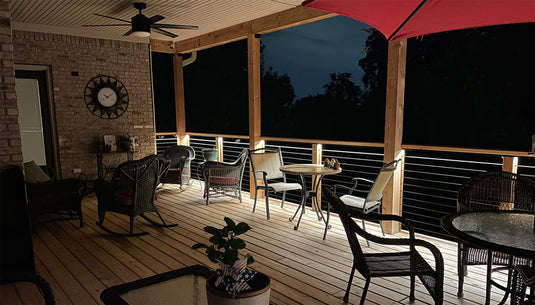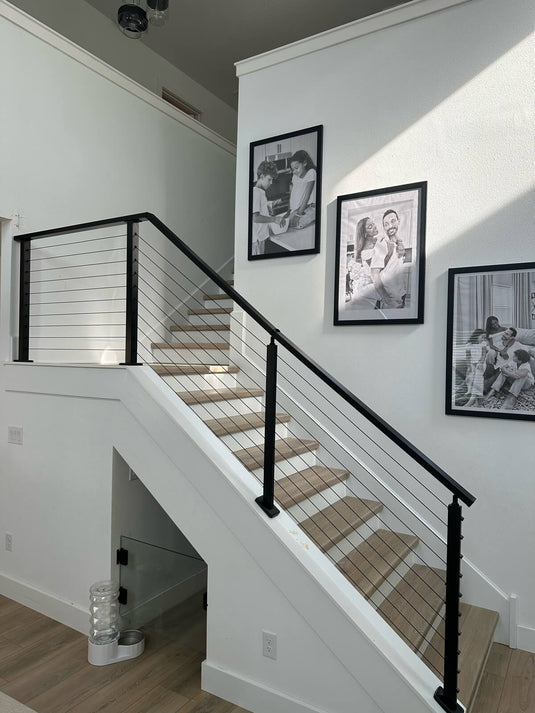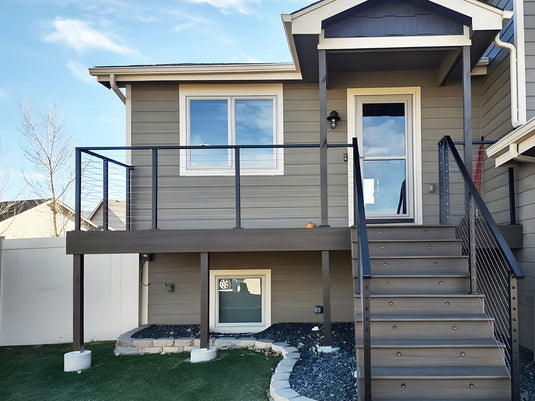TABLE OF CONTENTS
How Technology Influencing Stair Railing Design and Height in 2025
Stair railings have evolved from their conventional function as simple safety guards to become important design components combining aesthetic creativity with practical use. Stairway designs are changing dramatically as building technologies advance. From simple wooden structures to sophisticated, intelligent systems, railing designs now reflect our technological capabilities, integrating smart materials, advanced manufacturing techniques, and cutting-edge safety features that reimagine how we interact with vertical spaces in our homes and public buildings.

1. Smart Materials and Manufacturing Innovations
Contemporary stairway designs are being revolutionized by extraordinary material technologies. Carbon fiber composites offer unprecedented strength-to-weight ratios, enabling designers to create incredibly lightweight yet robust railing systems. These advanced materials allow for more intricate and delicate stairway designs that were previously impossible to engineer.
For stair railings, three-dimensional printing technology has greatly opened design options. Modern architects and designers can create intricate geometric patterns and organic forms, challenging conventional production limits. Precision engineering made possible by computer numerical control (CNC) machining lets complex details and original structural designs be seamlessly integrated.
Innovative manufacturing techniques are pushing the boundaries of what's possible in stairway designs. Materials like smart glass can transform railing transparency on demand, creating dynamic visual experiences. Bamboo-based composites offer sustainable alternatives that maintain structural integrity while providing environmentally conscious design solutions.
2. Integration of Smart Home Technologies
Modern stairway designs are increasingly incorporating intelligent technologies that enhance safety and user experience. LED lighting systems integrated directly into railings can provide adaptive illumination, changing brightness based on ambient light conditions or time of day. Motion sensors detect movement, automatically activating lighting sequences and providing enhanced security.
The connectivity of home automation changes stair railings from passive architectural features into interactive systems. Sensors can track movement, identify possible falls, and notify housekeepers or caretakers. Modern sophisticated stairway designs sometimes incorporate temperature-responsive materials that change grip properties depending on the surroundings.
These technical connections go beyond simple utility. By connecting with smartphone apps, Bluetooth-enabled railings let users detect household movement, adjust lights, and even check energy expenditure. Such innovations mark a major departure in our understanding of stairway designs.
3. Ergonomic and Safety Enhancements
Ergonomic considerations are driving remarkable innovations in stairway designs. Advanced sensor technologies enable railings with dynamically adjustable heights, accommodating users with different physical capabilities. Intelligent grip surfaces can modify their texture and friction based on user interaction, providing optimal support for individuals with varying mobility levels.
Material science breakthroughs have produced innovative coatings that enhance grip without compromising aesthetic appeal. Nano-textured surfaces can provide superior friction while maintaining a sleek, modern appearance. Temperature-responsive materials ensure consistent grip performance across different environmental conditions.
Using biomechanical studies, designers are building railings that fit human movement patterns organically. Engineers create stairway designs that offer simple support and reduce physical strain during ascent and descent by learning how humans interact with vertical surfaces.
4. Design Flexibility and Customization
Digital design technologies have changed how the architects conceptualize stairway construction. Technologies, including augmented reality (AR) and virtual reality (VR), let homeowners and designers see railing projects before they are ever put in place. These immersive technologies offer users real-time experimentation with materials, colors, and configurations, therefore allowing exact personalization.
Advanced software platforms now integrate complex parametric design algorithms, generating countless design variations based on specific parameters. Architects can input constraints like space dimensions, material preferences, and safety requirements and receive multiple optimized stairway design options instantly.
Cloud-based collaboration platforms enable global design teams to work simultaneously on stair railing projects. Designers can share, modify, and refine concepts in real-time, accelerating the innovation process and breaking down geographical barriers in architectural design.
5. Sustainability and Eco-friendly Designs
Environmental consciousness is driving significant innovations in stairway designs. Recycled materials like reclaimed metals and sustainable composites are becoming mainstream choices for railing construction. Advanced processing techniques transform waste materials into high-performance architectural components.
Design tactics are being influenced by circular economy ideas; manufacturers are creating readily disassembled modular railing systems for use elsewhere. Using few raw materials, technologies such as laser cutting and precision welding help to create intricate constructions.
Embedded carbon tracking systems let builders figure out and reduce the environmental impact of every railing installation. These instruments enable consumers to make eco-friendly decisions by offering openness on long-term sustainability, manufacturing techniques, and material procurement.
Conclusion

Technology is completely reimagining stair railing design and turning these basic architectural components from passive barriers to smart, responsive systems. Stairway designs will represent our changing relationship with technology and design as advances keep coming forward: they will become more individualized, safe, and ecologically responsible.




